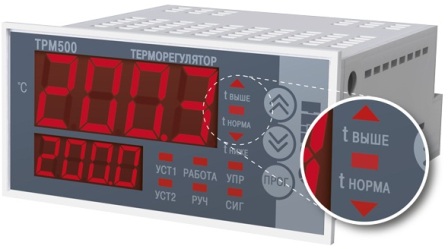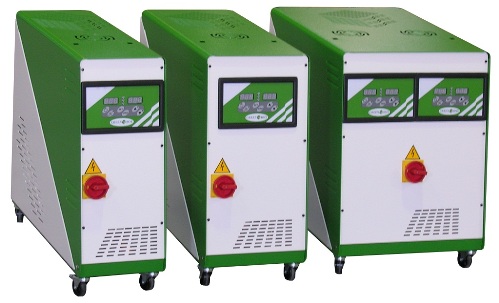Modern industrial thermostats
Industrial thermostats are indispensable parts in some industries today. They help regulate temperature, pressure, humidity, flow and other parameters in water supply systems, heating, drying installations, refrigerators, ovens, pasteurizers and many other technological equipment.
These thermostats receive information about the current state of the equipment or the environment from the relevant sensors: temperature, humidity, pressure, level, flow, etc. — depending on the application. Different equipment also have different temperature ranges and a specific thermostat is selected to operate under specific conditions. The thermostat is mounted on the cabinet door, switchboard, wall or DIN rail, and the corresponding wires are connected to the terminal blocks.
In such industries as: woodworking, food, chemical, metallurgy, oil refining, packaging, engineering, energy, housing and utilities, finally, thermostats are used everywhere. The topic of this article will be a brief overview of modern industrial temperature controllers.We will look at a few examples of their main types for different applications.
TMP500

To maintain the set temperature in ovens, extruders, homogenizers, heat presses, sealing machines, shrinking equipment, thermoforming, image transfer, in the production of building materials, in drying equipment, etc. — wherever automatic temperature control during heating is required — suitable industrial thermostat TPM500 manufactured by the Russian company «OWEN».
This device can control the temperature by proportional integral derivative control during heating and in on/off mode it maintains the temperature set by the user.
The front panel of the device contains all the necessary indicators and control buttons. Thanks to the indicators, you can check whether the temperature is at the set level. There are also output relays to control alarms when the temperature reaches the set point.
The device has a discrete input that allows you to give commands to change the set value, that is, control can be both manual and remotely automated. «Start» and «stop» can be implemented both manually and via a discrete input.
A thermistor or thermocouple are suitable as temperature gauges that are connected in a two-, three- or four-wire circuit. It has an integrated circuit to compensate for the cold end of the thermocouple. All the most common thermal sensors are supported. The inputs for connecting the sensor and for powering the network are located on the back of the device, as well as the outputs.
There are three outputs on the device: a powerful built-in relay (for 30 or 5 amps, depending on the version) to control the alarm or the load directly; output for controlling an external hard relay for voltage up to 5 volts; output for switching an alarm (light or buzzer) up to 5 amps.
The device is convenient to install on the equipment panel, has large digital indicators, is easy to adjust, small, looks modern.
Green Tuberculosis Box

Water thermostats (thermostats) are designed to automatically maintain a constant set temperature in a water circuit. Such thermostats are produced for direct work with water or oil, in particular the photo shows thermostats for water or oil for a maximum working water temperature of 90 ° C from the Italian company Green box.
These devices are divided according to the type of cooling heat exchanger into thermostats with direct cooling, — when heat is released by adding and mixing cooling water directly in the circuit, and indirect cooling, — when the cooling and cooled liquids do not mix, but nevertheless the heat extracts indirectly, thanks to fins heat exchanger.
If the cooling circuit does not contain additives such as glycol in the working fluid, then a direct cooling thermostat is suitable. The advantage of direct liquid mixing cooling is that the water in the consumer circuit and in the cooling circuit may not differ much in temperature, and the temperature in the consumer circuit may be equal to or slightly higher than that in the cooling circuit, however it will be possible to remove a considerable amount of heat. The cooling circuit is closed.
Water thermostats with direct heat exchange are suitable when it is necessary to locally strongly increase the pressure on the user, for example on a large form. So-called booster thermostats (thermostats) serve this purpose.
Indirect heat transfer thermostats use a heat exchanger to transfer heat. The advantage of these types of thermostats is especially pronounced in those systems where the temperature difference (between the water in the consumer circuit and the coolant in the cooling circuit) is very large, — the coolant in the consumer has a temperature that is much higher than the coolant in cooling circuit. Or the consumer circuit uses pure water and the coolant is based on a mixture of water and glycol.
Water thermostats are suitable for various industrial processes where rapid temperature control is required. They are convenient and reliable to work with, whether it is a boost system or an atmospheric pressure system.
An example of open tank thermostats are the Green Box thermal controllers of the TB-S and TB-M series, equipped with a reversible pump and an intelligent control system. They are designed to work with water up to 90°C or with oil up to 150°C. The TB-D series thermostat uses independent circuits. Two independent circuits operate in two halves of the device — indirect heat exchange through a finned heat exchanger.
Connection to timer thermostats, non-standard pump, external thermocouple and manifold is allowed. A water filtration system can also be optionally incorporated into the thermostat design.
